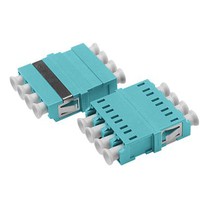
In fiber optic transmission, there are three main dispersion effects: chromatic dispersion, modal dispersion, and polarization mode dispersion. These dispersion effects cause distortion and broadening of the optical signal during transmission.
Chromatic Dispersion:
Description: Chromatic dispersion delay is due to different wavelengths (frequency) of the optical signal in the fiber propagation speed caused by different.
Reason: The dispersion characteristics of fiber optic materials lead to different wavelengths of light signals propagate at different speeds. Shorter wavelength light signal propagation speed is relatively fast, longer wavelength light signal propagation speed is relatively slow.
Impact: Dispersion delay will lead to the broadening of the optical pulse, making the signal between the code crosstalk increase, and limit the transmission rate and transmission distance of optical signals.
Modal Dispersion:
Description: Modal dispersion is a dispersion effect that occurs in multimode fibers.
Cause: Since multimode fiber supports multiple fiber modes (propagation paths of light beams), the light of different modes travels in different times from the end of the fiber, resulting in signal broadening and distortion.
Impact: Mode dispersion causes distortion and broadening of the optical signal, limiting the bandwidth and distance of fiber optic transmission. It is particularly significant in long distance and high speed transmission.
Polarization Mode Dispersion:
Description: Polarization mode dispersion is a dispersion effect caused by the coupling of the polarization state of light in an optical fiber.
Cause: Due to the non-uniformity of the fiber or stress and other factors, different polarization states of light in the fiber propagation speed is different, resulting in distortion and broadening of the optical signal.
Effects: Polarization mode dispersion causes time differences between different polarization states of the optical signal in the fiber, resulting in signal distortion and inter-code crosstalk.
These dispersion effects are one of the major limiting factors in fiber optic transmission systems. In order to reduce the impact of dispersion effects on optical signals, dispersion compensation techniques, the use of specially designed fiber materials, and the optimization of fiber connections can be used to improve the performance and reliability of fiber optic transmission systems.






